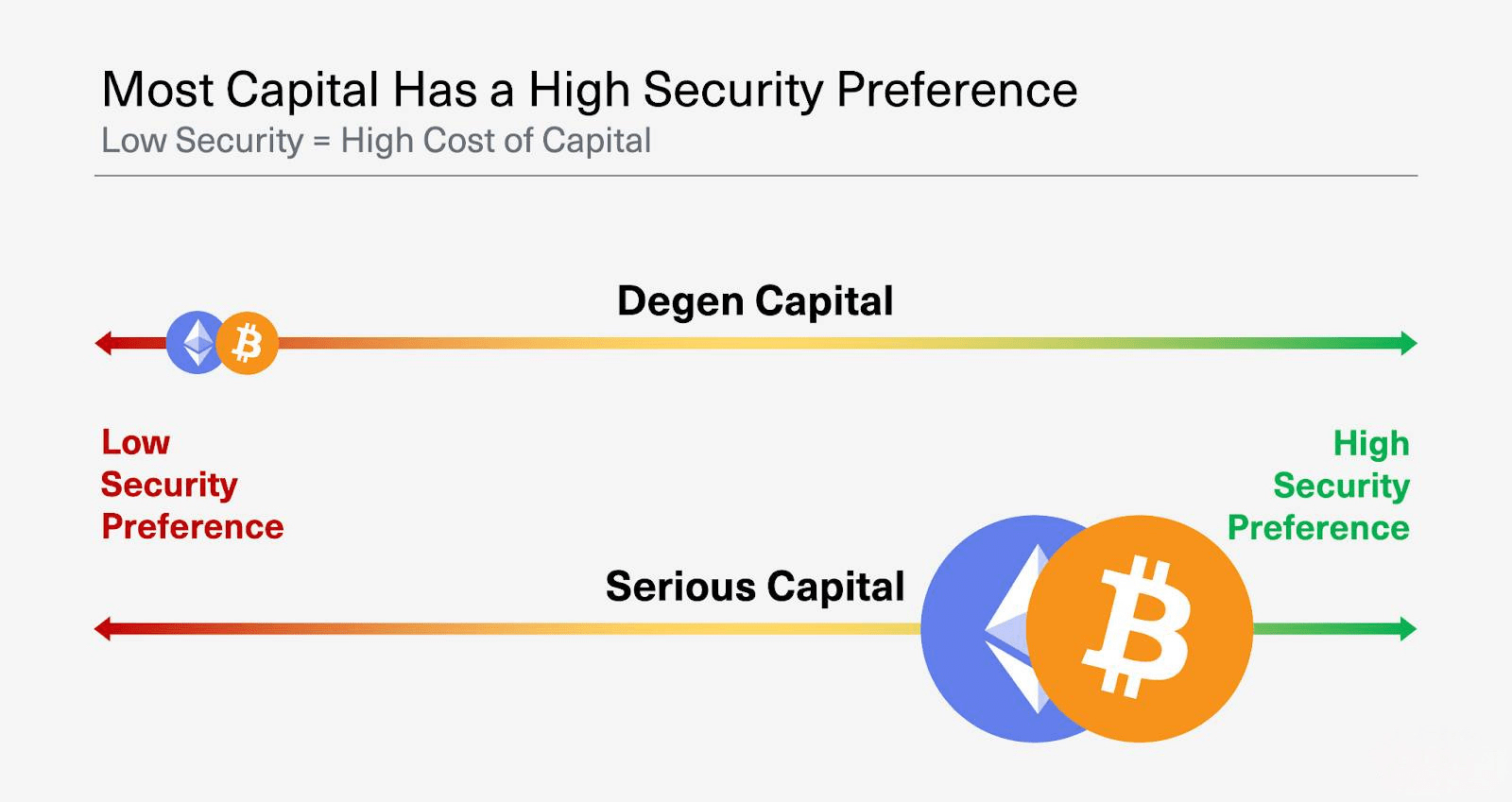To be honest, in the story of expanding the network for mass adoption, only Layer 2 on #Ethereum provides the highest level of reliability.
There will be no model that can solve the impossible trilemma: Decentralization, Security, Scalability. Developers are forced to sacrifice one aspect to trade for the remaining two.
Among the current top L1s, Solana, Sui, and Hyperliquid have already chosen to sacrifice decentralization from the beginning in exchange for speed and cost, so there's nothing more to say; there’s no need to discuss scalability anymore.
With this group, there will be two streams of thought:
(1) due to poor decentralization, users must trust the operating team, and assets are at risk of censorship.
(2) centralization is also a good point because if the network encounters issues, the operating team can Ctrl+Z to bring the network back on track. The recent Sui hack or Hyperliquid attack is an example; they can intervene freely if they like.
Ethereum has chosen a different path, where decentralization, security, and censorship resistance are non-negotiable options. The assets mentioned above are nearly inviolable; therefore, mainstream capital often seeks refuge in them more than in other networks. RWA from organizations is an example. The larger the money, the more it seeks safe haven.
But its weakness lies in scalability, making Layer 2 the best solution available so far. Sacrificing decentralization and part of security in exchange for speed. In essence, Ethereum Layer 2 is not inferior to Layer 1s like Sui, Hyper, and others. In fact, the level of security is even higher because it inherits security from Ethereum. For comparison, those Layer 1s should only be compared to the new Ethereum L2 group of the same weight class in design philosophy.
As for #Bitcoin, everything is supreme: supreme decentralization, supreme security, and also supreme ‘poor’ scalability. Currently, Bitcoin cannot scale in the L2 manner like Ethereum because it cannot handle complex logic such as verifying proofs, so L2s cannot inherit security. Bitcoin only serves as a storage for checkpoint points.
So in the end, Layer 2 on Ethereum is indeed a good choice for high-speed networks.
Ethereum's weakness is that it is heavily fragmented and unable to transfer the value chain from L2 back.
Secondly, Ethereum is too complex, so there are many potential vulnerabilities during development; many vulnerabilities mean a higher risk of hacks. Vitalik has announced plans to simplify L1 but it is unknown when it will be completed.
Most importantly, the builders on Ethereum this cycle seem to have a very focused mindset, not interested in creating trends or following the trend, resulting in the price line $ETH looking very poor, while the long-term price will depend on what they are building, and we don't even know whether it will succeed. LOL.
